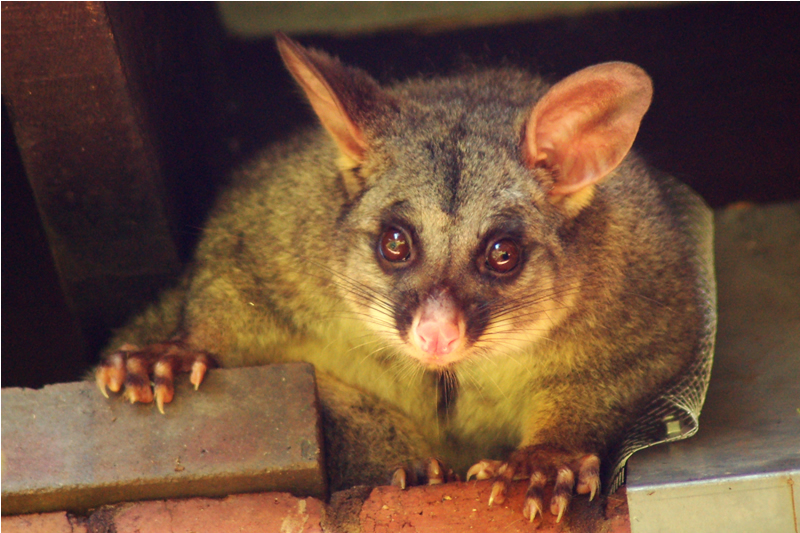
Possums are critical to maintaining a balanced ecosystem, but they often clash with human residents. While beneficial in controlling pests and dispersing seeds, these nocturnal creatures can become unwelcome guests when they venture too close for comfort.
This blog post highlights the distinct approaches towards managing possum interactions, humane possum removal and possum trapping, detailing their differences and advocating for methods that ensure both human and animal welfare.
Understanding Possums
Possums are versatile creatures that inhabit many environments but are predominantly found in wooded areas. Their adaptability allows them to explore urban environments in search of food, leading to occasional encounters with humans.
Despite their sometimes pesky behaviour, possums are protected under various wildlife conservation laws, necessitating ethical management practices that do not harm these curious marsupials.
The Importance of Possums
Aside from being adorable creatures of the night, possums play vital roles in their ecosystems. They help control insect populations, including ticks, which can reduce the spread of diseases. Their foraging habits also aid in seed dispersion, contributing to a diverse and healthy environment.
Understanding these benefits is crucial in fostering a harmonious coexistence with possum populations.
What is Possum Trapping?
Traditionally, possum management has used traps to capture and relocate these animals.
However, this method poses several challenges and ethical concerns:
- Stress and Injury – Trapped possums may experience significant stress or physical harm, which can impact their well-being and survival chances upon release.
- Legality and Ethics – Many regions have stringent laws protecting possums, restricting the use of certain traps that cause harm.
- Effectiveness – Trapping addresses the symptom rather than the cause. Without resolving the attractants (such as open trash or accessible food sources), new possums may simply replace those removed.
What is Humane Possum Removal?
In contrast, humane possum removal prioritises the safety and well-being of possums while effectively addressing human-possum conflicts. These include:
- Exclusion Practices – Identifying and sealing entry points to prevent possum access, ensuring they cannot re-enter.
- Habitat Modification – Altering the environment to make it less appealing to possums, such as securing garbage, removing food sources, and trimming tree branches near structures.
- Education and Awareness – Informing residents about possum behaviour and ecology can lead to more tolerant attitudes and coexistence strategies.
This approach safeguards possum welfare and offers a long-term solution by addressing the root causes of possum intrusion.
Comparative Analysis
A side-by-side evaluation reveals that humane possum removal outshines trapping in several key areas. The first is its effectiveness. Humane removal provides a sustainable solution to possum intrusions by eliminating attractants and access points.
It also has ethical considerations regarding the intrinsic value of wildlife, ensuring that possums are not harmed in conflict resolution. Humane removal ensures legal compliance and avoids the pitfalls associated with harmful trapping methods when adhering to wildlife protection laws.
Wildlife experts and environmentalists overwhelmingly support humane methods for managing possum populations. They emphasise the importance of understanding possum behaviour and employing non-harmful strategies to mitigate conflicts.
Professionals in wildlife management, like Possum Busters, are equipped with the knowledge and tools to implement humane possum removal effectively, ensuring the well-being of both humans and possums.
Conclusion
The choice between humane possum removal and possum trapping is clear. By opting for compassionate and effective management strategies, we can protect our possum neighbours while safeguarding our homes and communities.
This harmonious approach not only complies with legal standards but also aligns with ethical considerations, highlighting our shared responsibility towards the well-being of all creatures. Give our experienced team a call today to humanely attend to your possum problems.
FAQs
Can I remove a possum myself?
While some non-intrusive measures can be taken independently, consulting with professional wildlife services for safe and humane possum removal is advisable, especially when dealing with established possum residents.
How can I make my yard less attractive to possums?
Maintain cleanliness by securing garbage bins, removing pet food at night, and limiting accessible water sources. Additionally, ensure your garden does not offer sheltered hiding spots for possums.
Are possums dangerous to pets?
Possums are generally non-aggressive and prefer to avoid confrontations. While rare, interactions with pets can occur, typically resulting in nothing more than a scare. Protecting pets and possum entry points can prevent such encounters.
Choosing humane methods for possum management embodies a commitment to compassion, ethical treatment, and effective solutions. For guidance and assistance, reaching out to professionals specialising in humane wildlife removal is the best action, ensuring a peaceful coexistence with these fascinating members of our natural world.

